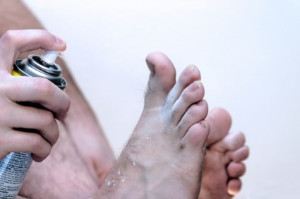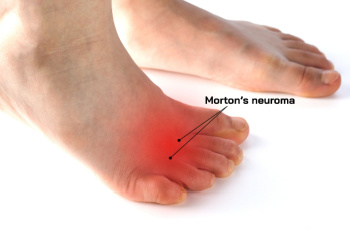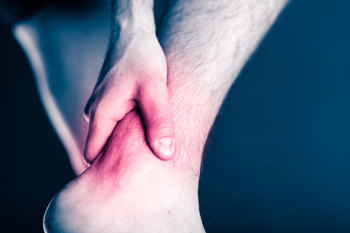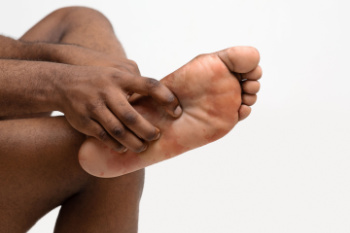Connect With Us
Blog
Items filtered by date: December 2024
Key Facts About Athlete’s Foot

Athlete’s foot is a fungal infection that affects the skin on the feet, causing itching, burning, and peeling. It is caused by dermatophytes, a type of fungus that thrives in warm, moist environments like locker rooms, swimming pools, and public showers. The infection spreads through direct contact or by sharing contaminated items such as towels or shoes. Those who sweat excessively or wear tight, non-breathable shoes are at higher risk. Symptoms of athlete’s foot include red, scaly skin, blisters, and cracked skin, often between the toes or on the soles of the feet. If left untreated, the infection can spread to other areas of the body, including the nails or groin, and may lead to bacterial infections. Persistent infections may require stronger medications or specialized care. A podiatrist can accurately diagnose the condition and recommend the best treatment plan. If you are experiencing symptoms of athlete’s foot, it is suggested that you schedule an appointment with a podiatrist.
Athlete’s foot is an inconvenient condition that can be easily reduced with the proper treatment. If you have any concerns about your feet and ankles, contact one of our podiatrists from Foot & Ankle Surgical Group. Our doctors will treat your foot and ankle needs.
Athlete’s Foot: The Sole Story
Athlete's foot, also known as tinea pedis, can be an extremely contagious foot infection. It is commonly contracted in public changing areas and bathrooms, dormitory style living quarters, around locker rooms and public swimming pools, or anywhere your feet often come into contact with other people.
Solutions to Combat Athlete’s Foot
- Hydrate your feet by using lotion
- Exfoliate
- Buff off nails
- Use of anti-fungal products
- Examine your feet and visit your doctor if any suspicious blisters or cuts develop
Athlete’s foot can cause many irritating symptoms such as dry and flaking skin, itching, and redness. Some more severe symptoms can include bleeding and cracked skin, intense itching and burning, and even pain when walking. In the worst cases, Athlete’s foot can cause blistering as well. Speak to your podiatrist for a better understanding of the different causes of Athlete’s foot, as well as help in determining which treatment options are best for you.
If you have any questions please feel free to contact our office located in Henderson, NV . We offer the newest diagnostic and treatment technologies for all your foot and ankle needs.
Get Proper Treatment for Ankle Injuries
Symptoms and Treatment of Morton’s Neuroma

Morton’s neuroma is a condition that involves the thickening or enlargement of a nerve in the foot, often occurring between the third and fourth toes. Morton’s neuroma can cause sharp, stabbing, or throbbing pain in the ball of the foot, along with numbness, tingling, and a burning sensation. Many patients report feeling as if they are stepping on a pebble. Poorly fitting shoes, high heels, or foot structures like high arches or overpronation may contribute to the development of Morton’s neuroma. A podiatrist can diagnose Morton’s neuroma by evaluating symptoms and conducting a physical exam, often using specific tests to pinpoint the affected nerve. Treatment may involve wearing properly fitting shoes, using metatarsal pads, or being fitted for custom orthotics to alleviate pressure on the nerve. In cases where conservative measures do not provide relief, a podiatrist may recommend corticosteroid injections or surgery. If you have nerve pain in the ball of the foot, it is suggested that you schedule an appointment with a podiatrist for an exam and treatment options.
Morton’s neuroma is a very uncomfortable condition to live with. If you think you have Morton’s neuroma, contact one of our podiatrists of Foot & Ankle Surgical Group. Our doctors will attend to all of your foot care needs and answer any of your related questions.
Morton’s Neuroma
Morton's neuroma is a painful foot condition that commonly affects the areas between the second and third or third and fourth toe, although other areas of the foot are also susceptible. Morton’s neuroma is caused by an inflamed nerve in the foot that is being squeezed and aggravated by surrounding bones.
What Increases the Chances of Having Morton’s Neuroma?
- Ill-fitting high heels or shoes that add pressure to the toe or foot
- Jogging, running or any sport that involves constant impact to the foot
- Flat feet, bunions, and any other foot deformities
Morton’s neuroma is a very treatable condition. Orthotics and shoe inserts can often be used to alleviate the pain on the forefront of the feet. In more severe cases, corticosteroids can also be prescribed. In order to figure out the best treatment for your neuroma, it’s recommended to seek the care of a podiatrist who can diagnose your condition and provide different treatment options.
If you have any questions, please feel free to contact our office located in Henderson, NV . We offer the newest diagnostic and treatment technologies for all your foot care needs.
Understanding and Managing Pain From Achilles Tendinopathy

Achilles tendinopathy is a common foot and ankle issue caused by overuse of the Achilles tendon. It can be classified into two types, which are insertional, where the tendon attaches to the heel, and non-insertional, which impacts the middle portion of the tendon. While both cause pain, swelling, and stiffness, insertional tendinopathy often involves discomfort at the back of the heel, while non-insertional pain is felt higher up along the tendon. If left untreated, the tendon can go through non-healing stages known as reactive tendinopathy, or early swelling and pain, tendon disrepair, and degenerative tendinopathy, causing long-term damage with thickening and weakness. Proper treatment includes rest, targeted exercises, and addressing any biomechanical issues. If you are experiencing persistent pain in your Achilles tendon, it is suggested that you see a podiatrist for an accurate diagnosis and an effective treatment plan.
Achilles tendon injuries need immediate attention to avoid future complications. If you have any concerns, contact one of our podiatrists of Foot & Ankle Surgical Group. Our doctors can provide the care you need to keep you pain-free and on your feet.
What Is the Achilles Tendon?
The Achilles tendon is a tendon that connects the lower leg muscles and calf to the heel of the foot. It is the strongest tendon in the human body and is essential for making movement possible. Because this tendon is such an integral part of the body, any injuries to it can create immense difficulties and should immediately be presented to a doctor.
What Are the Symptoms of an Achilles Tendon Injury?
There are various types of injuries that can affect the Achilles tendon. The two most common injuries are Achilles tendinitis and ruptures of the tendon.
Achilles Tendinitis Symptoms
- Inflammation
- Dull to severe pain
- Increased blood flow to the tendon
- Thickening of the tendon
Rupture Symptoms
- Extreme pain and swelling in the foot
- Total immobility
Treatment and Prevention
Achilles tendon injuries are diagnosed by a thorough physical evaluation, which can include an MRI. Treatment involves rest, physical therapy, and in some cases, surgery. However, various preventative measures can be taken to avoid these injuries, such as:
- Thorough stretching of the tendon before and after exercise
- Strengthening exercises like calf raises, squats, leg curls, leg extensions, leg raises, lunges, and leg presses
If you have any questions please feel free to contact our office located in Henderson, NV . We offer the newest diagnostic tools and technology to treat your foot and ankle needs.
Recovery From Hammertoe Surgery

Hammertoe is a deformity that causes one or more toes to bend downward at the middle joint, resembling a hammer. This condition can result from muscle imbalance, wearing tight footwear, or injury, and it often leads to pain, corns, and difficulty walking. In mild cases, hammertoe can be managed with non-surgical treatments such as proper footwear and toe exercises. However, when the condition becomes severe, surgery may be required. The surgical procedure typically involves straightening the affected toe, removing excess bone, or realigning tendons to restore normal function. Recovery from hammertoe surgery can vary depending on the severity of the deformity and the type of procedure performed. Generally, patients are advised to rest, avoid putting weight on the foot, and wear special shoes during the healing process. Full recovery may take several weeks, but with proper care, the toe can regain proper alignment and function. If you have a painful hammertoe, it is suggested that you consult a podiatrist who can determine if surgery is a correct treatment option for you.
Foot surgery is sometimes necessary to treat a foot ailment. To learn more, contact one of our podiatrists of Foot & Ankle Surgical Group. Our doctors will assist you with all of your foot and ankle needs.
When Is Surgery Necessary?
Foot and ankle surgery is generally reserved for cases in which less invasive, conservative procedures have failed to alleviate the problem. Some of the cases in which surgery may be necessary include:
- Removing foot deformities like bunions and bone spurs
- Severe arthritis that has caused bone issues
- Cosmetic reconstruction
What Types of Surgery Are There?
The type of surgery you receive will depend on the nature of the problem you have. Some of the possible surgeries include:
- Bunionectomy for painful bunions
- Surgical fusion for realignment of bones
- Neuropathy decompression surgery to treat nerve damage
Benefits of Surgery
Although surgery is usually a last resort, it can provide more complete pain relief compared to non-surgical methods and may allow you to finally resume full activity.
Surgical techniques have also become increasingly sophisticated. Techniques like endoscopic surgery allow for smaller incisions and faster recovery times.
If you have any questions please feel free to contact our office located in Henderson, NV . We offer the newest diagnostic and treatment technologies for all your foot and ankle needs.
Symptoms and Treatment of Plantar Fasciitis

Plantar fasciitis occurs when the thick band of tissue connecting the heel bone to the toes, the plantar fascia, becomes inflamed. This condition often results from repetitive stress or strain on the foot, leading to small tears in the tissue. People with plantar fasciitis commonly experience sharp or aching pain in the heel, particularly during the first steps in the morning, or after extended periods of rest. The pain may intensify after long periods of walking, standing, or running. Risk factors include having flat feet or high arches, tight calf muscles, prolonged standing on hard surfaces, or wearing unsupportive footwear. A podiatrist can diagnose plantar fasciitis by evaluating your symptoms and performing a physical examination. Advanced imaging may also be used to confirm the condition and rule out other causes of heel pain. Treatment often includes specific exercises, footwear advice, and custom orthotics to reduce strain on the plantar fascia. If you have heel pain that may be linked to plantar fasciitis, it is suggested that you schedule an appointment with a podiatrist for treatment.
Plantar fasciitis can be very painful and inconvenient. If you are experiencing heel pain or symptoms of plantar fasciitis, contact one of our podiatrists from Foot & Ankle Surgical Group. Our doctors can provide the care you need to keep you pain-free and on your feet.
What Is Plantar Fasciitis?
Plantar fasciitis is the inflammation of the thick band of tissue that runs along the bottom of your foot, known as the plantar fascia, and causes mild to severe heel pain.
What Causes Plantar Fasciitis?
- Excessive running
- Non-supportive shoes
- Overpronation
- Repeated stretching and tearing of the plantar fascia
How Can It Be Treated?
- Conservative measures – anti-inflammatories, ice packs, stretching exercises, physical therapy, orthotic devices
- Shockwave therapy – sound waves are sent to the affected area to facilitate healing and are usually used for chronic cases of plantar fasciitis
- Surgery – usually only used as a last resort when all else fails. The plantar fascia can be surgically detached from the heel
While very treatable, plantar fasciitis is definitely not something that should be ignored. Especially in severe cases, speaking to your doctor right away is highly recommended to avoid complications and severe heel pain. Your podiatrist can work with you to provide the appropriate treatment options tailored to your condition.
If you have any questions please feel free to contact our office located in Henderson, NV . We offer the newest diagnostic and treatment technologies for all your foot and ankle needs.

